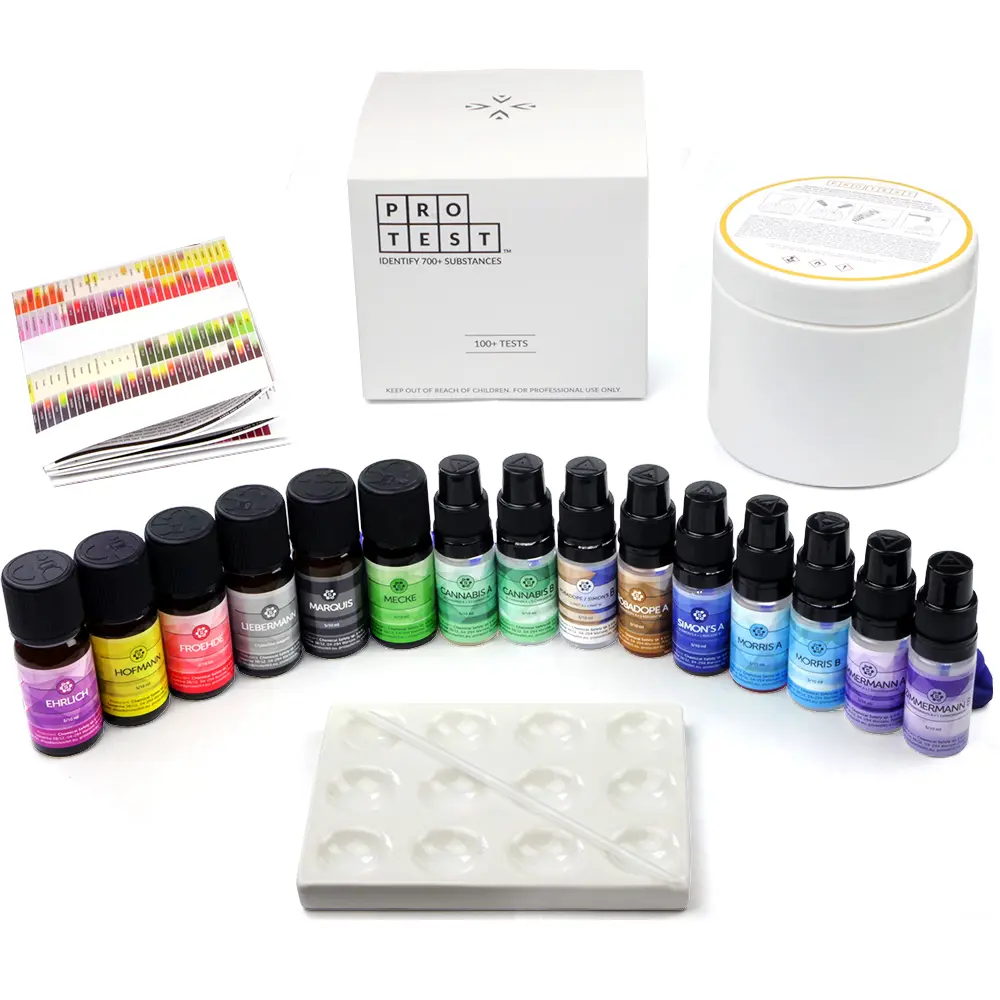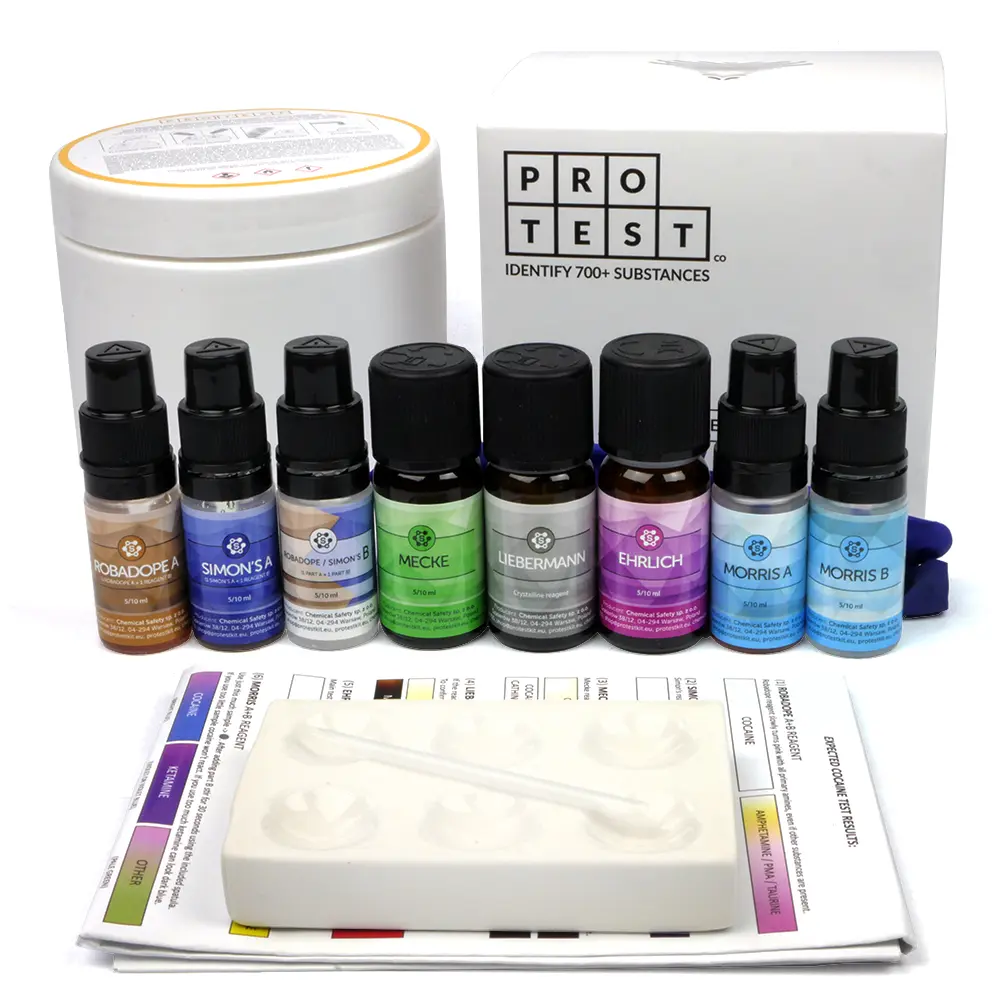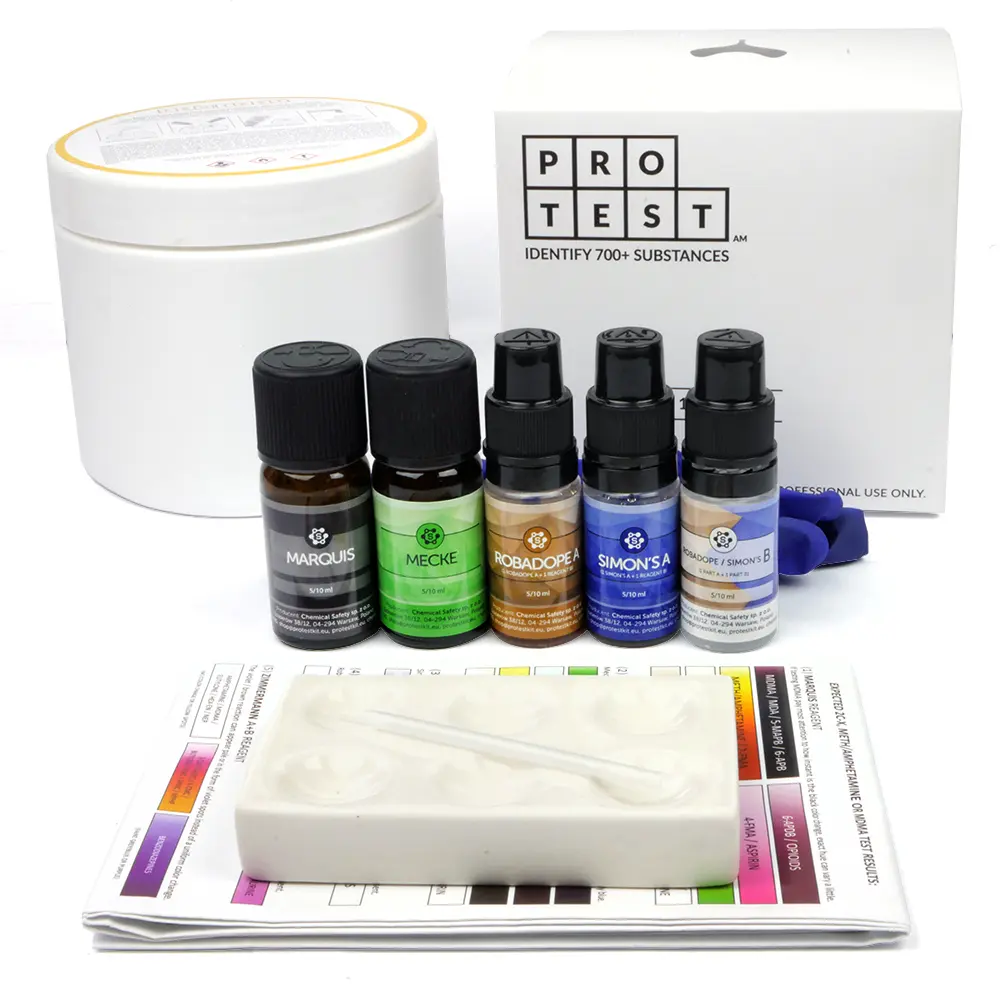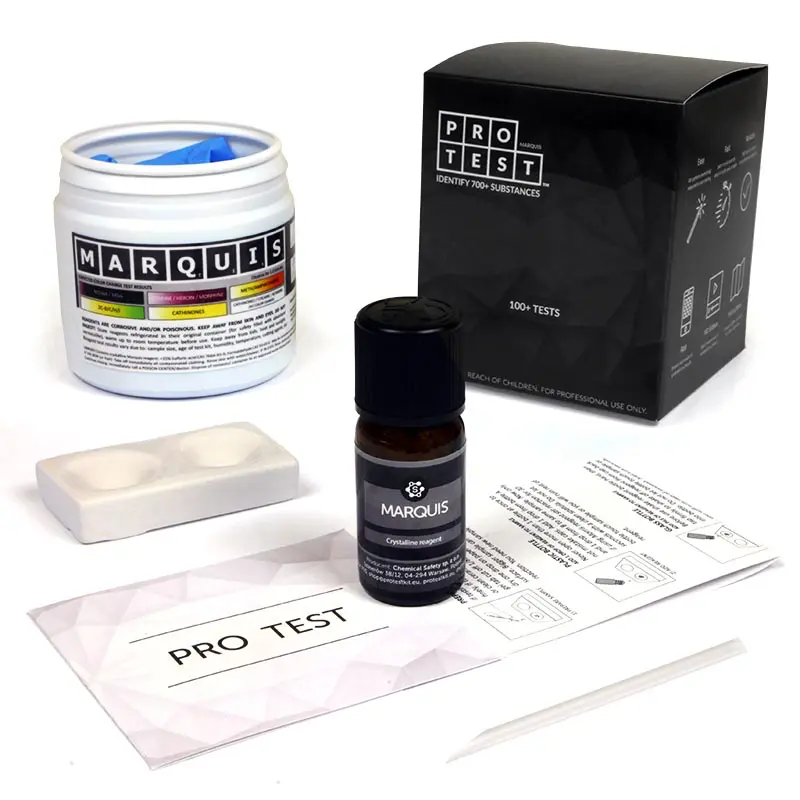How to detect PMA / PMMA / PMEA?
What are PMA, PMMA and PMEA?
Para-methoxyamphetamine (PMA), para-Methoxy-N-methylamphetamine (PMMA) and PMEA share a close chemical resemblance and are a part of the amphetamine-class serotonergic drugs known to be toxic to humans. They are believed to carry significant potential for inducing harmful side effects or even fatal outcomes in cases of overdose. These are substances classified as both a stimulant and a psychedelic drug, however, there exists limited knowledge regarding its pharmacological properties, metabolism, and toxicity.
Why are PMA, PMMA and PMEA dangerous?
A series of fatalities during the early 2010s among individuals who had ingested MDMA were linked to misidentified tablets and capsules containing PMMA. The effects of PMMA in humans are said to be somewhat analogous to those of PMA, displaying a slightly heightened empathogenic nature. Notably, it demonstrates a reduced tendency to induce severe hyperthermia at lower doses. However, at higher doses, the risks and adverse effects escalate to levels comparable to those caused by PMA.
American experimental chemist Alexander Shulgin, in his book PiHKAL, elucidated the synthesis and effects of PMMA, referring to it as “methyl-MA” due to its status as the N-methylated form of 4-MA (PMA). Shulgin reported that PMMA raises blood pressure and heart rate when consumed in amounts exceeding 100 mg, but does not induce psychoactive effects at such levels.
Regarding recreational use, instances have arisen where PMMA was identified within tablets and capsules being sold as MDMA, commonly known as “ecstasy.” A series of fatalities have been linked to tablets falsely marketed as ecstasy that actually contained other substances, including the structural analog of PMMA, namely PMA. The danger lies in the fact that an individual consuming what they believe to be recreational doses of MDMA may, in reality, be ingesting a lethal quantity of a different substance with similar effects. PMA is especially concerning because it triggers serotonin release while also acting as a monoamine oxidase inhibitor (MAOI). Should it be consumed alongside MDMA or similar substances, serotonin syndrome may manifest.
Reagent testing kits are available to detect the presence of PMMA, PMA or PMEA.
Best test for PMA, PMMA and PMEA
There are several ways to detect PMA and similiar compounds in samples:
- Lab analysis
- Reagent testing
- Thin Layer Chromatography
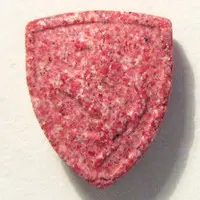
Red Ferrari PMMA pill from Germany
Test kit for PMA, PMMA and PMEA
To detect adulterants with reagent test kit an adulterant must cause a darker color change than the expected compound with particular reagent used. Therefore in most cases you need a reagent that does not react with the expected compound or produces a very weak reaction (like faint yellow Mecke or Liebermann with respectively methampheamine or ketamine). See below for photos of PMA, PMMA and PMEA reactions with tests Mandelin, Mecke, Froehde, Simon’s and Liebermann. More informations about known reference results are available at protestkit.eu/results.
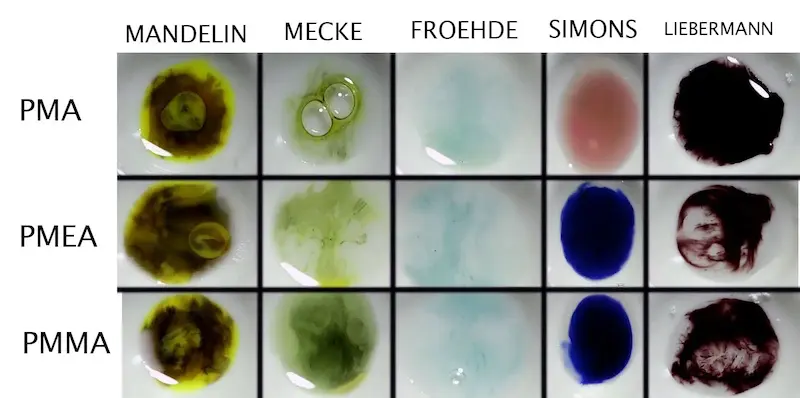
PMA, PMEA and PMMA reagent test results
Expected PMA reagent test results:
- Marquis reagent – no color change
- Mecke reagent – green
- Mandelin reagent – brown
- Liebermann reagent – dark brown / black
- Froehde reagent – light blue
- Robadope reagent – pink
- Simon’s reagent – no blue color change
Expected PMMA reagent test results (also applies to PMEA):
- Marquis reagent – no color change
- Mecke reagent – green
- Mandelin reagent – brown
- Liebermann reagent – dark brown / black
- Froehde reagent – light blue
- Robadope reagent – no pink color change
- Simon’s reagent – instant blue
Please note that for PMEA apply the same instructions as for PMMA. As for Mandelin reagent we do not recommend it due to extreme number of possible false positives and terrible shelf life. We have replaced Mandelin reagent with significantly superior Morris reagent.
Recommended reagent testing kits for detecting PMA, PMMA and PMEA:
How to detect PMA in MDMA?
- Robadope reagent – turns pink with PMA and other primary amines
- TLC MDMA Purity Test Kit – detects full number of ingredients and estimates their amounts
How to detect PMMA in MDMA?
- TLC MDMA Purity Test Kit – detects full number of ingredients and estimates their amounts
How to detect PMA in MDA?
- TLC MDMA Purity Test Kit – detects full number of ingredients and estimates their amounts
How to detect PMMA in MDA?
- Simon’s reagent – turns blue with PMMA, PMEA and other secondary amines
- TLC MDMA Purity Test Kit – detects full number of ingredients and estimates their amounts
How to detect PMA in methamphetamine?
- Mecke reagent – green
- Froehde reagent – light blue
- Liebermann reagent – dark brown / black
- Robadope reagent – turns pink with PMA and other primary amines
How to detect PMMA in methamphetamine?
- Mecke reagent – green
- Froehde reagent – light blue
- Liebermann reagent – dark brown / black
- TLC MDMA Purity Test Kit – detects full number of ingredients
How to detect PMA in amphetamine?
- Mecke reagent – green
- Froehde reagent – light blue
- Liebermann reagent – dark brown / black
- TLC Amphetamine Purity Test Kit – detects full number of ingredients
How to detect PMMA in amphetamine?
- Mecke reagent – green
- Froehde reagent – light blue
- Liebermann reagent – dark brown / black
- Simon’s reagent – turns blue with PMMA, PMEA and other secondary amines
- TLC Amphetamine Purity Test Kit – detects full number of ingredients
How to detect PMA in 2C-B?
- TLC MDMA Purity Test Kit – detects full number of ingredients and estimates their amounts
How to detect PMMA in 2C-B?
- Simon’s reagent – turns blue with PMMA, PMEA and other secondary amines
- TLC MDMA Purity Test Kit – detects full number of ingredients and estimates their amounts
How to detect PMA in ketamine?
Froehde reagent not applicable due to possible false positive with a ketamine synthesis leftover impurity.
- Mecke reagent – green
- Liebermann reagent – dark brown / black
- Robadope reagent – turns pink with PMA and other primary amines
- TLC Ketamine Purity Test Kit – detects full number of ingredients in ketamine sample
How to detect PMMA in ketamine?
Froehde reagent not applicable due to possible false positive with a ketamine synthesis leftover impurity.
- Mecke reagent – green
- Liebermann reagent – dark brown / black
- Simon’s reagent – turns blue with PMMA, PMEA and other secondary amines
- TLC Ketamine Purity Test Kit – detects full number of ingredients in ketamine sample
Drug test kit for PMA, PMMA or PMEA
As listed above for testing PMA, PMMA and PMEA you can use reagents Mecke, Froehde, Liebermann, Simon’s and Robadope as well as TLC Purity Test Kits. We especially recommend our MDMA Test Kit combined with TLC MDMA Purity Test Kit, as well as Full Reagent Test Kit and Full TLC Purity Test Kit.
Recommended test kits:
A positive or negative test result does not indicate if the substance is safe. No substance is 100% safe.
